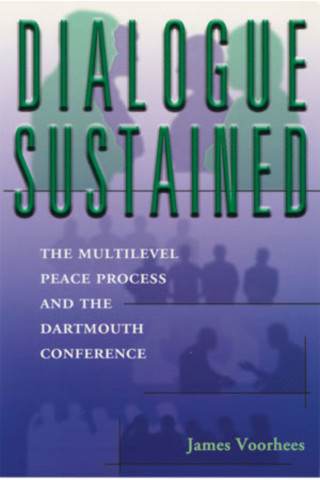Harold H. Saunders
Harold H. Saunders (1930 – March 6th, 2016) was the United States Assistant Secretary of State for Near East Affairs between 1978 and 1981. He is director of international affairs at the Kettering Foundation and the Founder and President of the International Institute for Sustained Dialogue. He co-chaired the Dartmouth Conference Task Force. Saunders graduated from Princeton University in 1952 with an A.B. and Yale University in 1955 with a Ph.D, prior to joining the United States Air Force to fulfill the mandatory service requirement, which led to a liaison role with the Central Intelligence Agency. Saunders joined the National Security Council staff in 1961, serving through the Johnson administration as the NSC’s Mideast expert during June 1967 Six-Day War. Saunders joined the Kissinger shuttles in October 1973 as an integral part of the small team of American diplomats led by Kissinger, with whom Saunders worked for the next eight years. During this period from 1973 to 1975, the Kissinger team helped negotiate a number of key disengagement agreements between Egypt and Israel. In 1974, Saunders was appointed deputy assistant secretary of state for the Near East and North Africa. As assistant secretary of state for the Near East and South Asia under President Carter, Saunders played a critical behind-the-scenes role during the 1978 negotiations at Camp David. 1979, following the revolution in Iran, Saunders coordinated efforts to secure the release of the U.S. embassy staff held during the Iran hostage crisis. The Inter-Tajik Dialogue developed out of Saunders’s work with the Dartmouth Conference Regional Conflicts Task Force as a series of unofficial, Track II dialogues between warring factions in the Tajik civil war.] The dialogues took place in Moscow, beginning in 1993 and lasting until 2003, during which 35 meetings took place.
Author's Books
The participants in the Dartmouth Conference-so named because the first meeting took place at Dartmouth College in 1960-didn't just open up a new level of East-West understanding, they also pioneered a new kind of dialogue between adversaries. They were not government officials, yet their aim was somehow to narrow the divide between the Soviet and American governments-and indeed their peoples. Over the course of more than 40 years, as relationships warmed and trust developed, their dialogue deepened and widened. The ideas and information exchanged between them filtered into public discourse and were channeled into policymaking circles on both sides of the Iron Curtain. The impact of the Dartmouth Conference can never be measured precisely, but it was substantial.
As James Voorhees demonstrates, the concept of the multilevel peace process, and especially the idea of sustained dialogue between influential but unofficial members of seemingly implacable groups, evolved as the Dartmouth process evolved. Unfettered by the constraints on official diplomats, the participants could speak with a rare degree of candor and freedom on a wide range of subjects, sustaining their conversation from one meeting to the next and building a foundation of shared knowledge. As Harold Saunders and Vitaly Zhurkin explain in a concluding chapter, the lessons learned and techniques developed at Dartmouth are being applied today in numerous settings.
Drawing on extensive research and interviews, this highly readable account of the evolution of a unique peacemaking venture adds a new perspective on both the Cold War and the conduct of multilevel peace processes.

